After a visit to Chennai with the MONASS team, I spent some weeks this summer exploring other parts of Tamil Nadu.
Tamil Nadu was created out of part of the former Madras State when the administration of India was divided based on language in 1950, three years after independence. Though Chennai is the capital, it sits in the far north of the state near the border with Andra Pradesh. The state extends south, encompassing over one thousand kilometres of Coromandel coastline to its terminus at Kanyakumari—the southern tip of the Indian peninsula—as well as widening westward towards the Nilgiri hills and the Western Ghats, which form the border region with the narrower coastal state of Kerala. It has been interesting to notice during our research on the Bay of Bengal that this asymmetric state divide follows quite closely the watershed divide: only a narrow strip of the peninsula drains west to the Arabian Sea; a much larger area drains east to the Bay of Bengal.[1]
Our journey took in some of the coastline to the immediate south of Chennai as well as a crossing of the peninsula by train to the Nilgiris, then on to Mysore and Bengaluru in Karnataka:
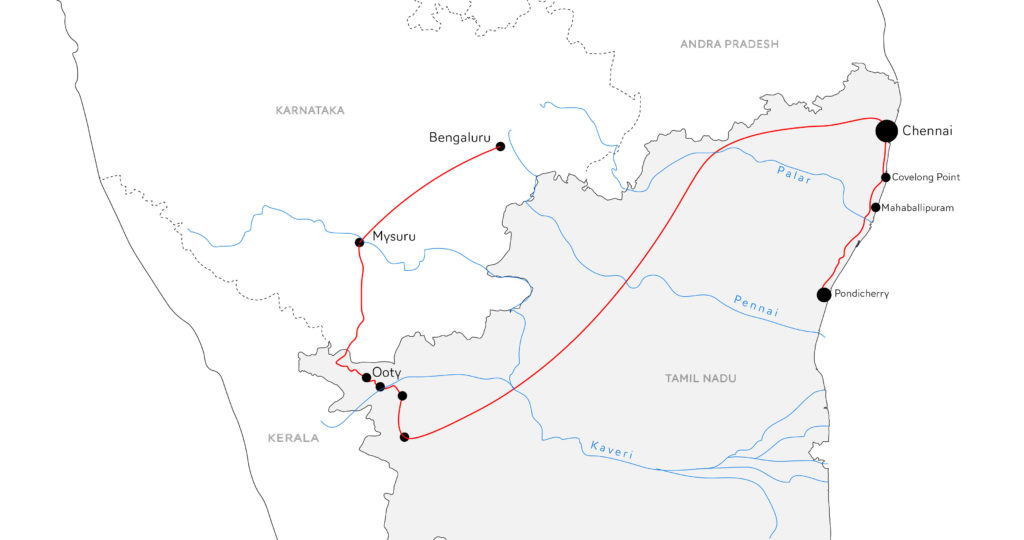
The journey south from Chennai crosses a number of wetlands and river deltas, though not all carry much water. I had been anticipating crossing the Palar—apparently the largest river delta in the region and the defining hydrological feature northern Tamil Nadu—and so I was surprised by the dry, scrubby landscape that we passed over. This was August, and though the Monsoon had moved from its first landfall in Kerala, and on to the North East (Bihar) where there was now significant flooding, these river systems sit in the rain shadow of the Western Ghats, and only really flow after heavy rains during the north-eastern retreating monsoon in November / December, as in 2015.[2] Interstate dams upstream, contamination from tanneries and other industry, sand mining, and over-extraction of groundwater, all contribute to the state of the river in this place.[3]
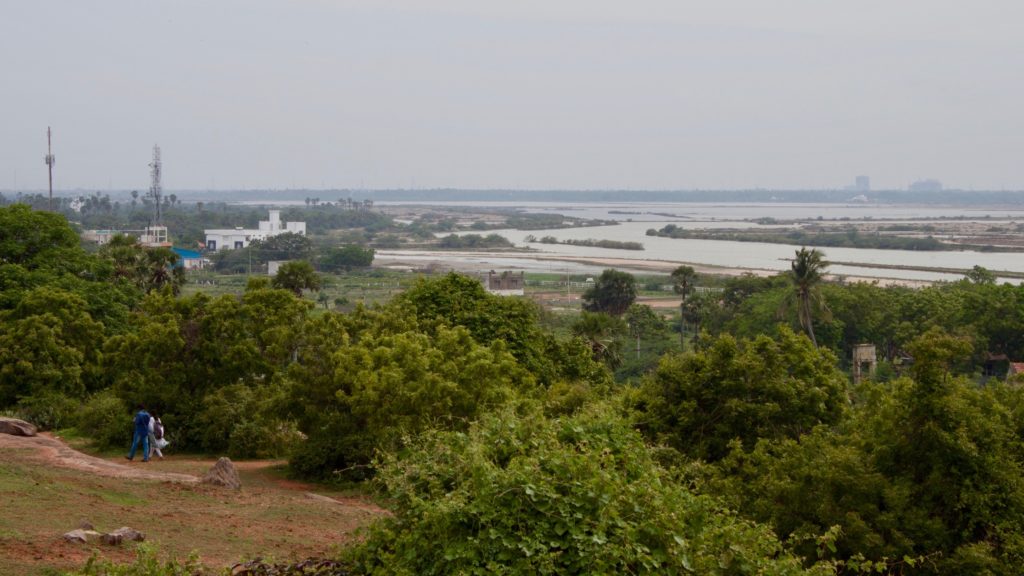
Much of the land was wet, though, and on the journey south we passed many salt pans and marsh systems. At Mahabalipuram, (Mamallapuram), it was possible to stand on the granite outcrop and look out across a landscape of lakes and ponds, salt pans and estuaries, and people working on them. And where we were standing, strikingly orthogonal tanks had been carved into the rock for water storage at high level, with remnants of an intricate network of shallow channels to direct the outflow. These channels include the giant cleft in the rock of Arjuna’s Penance / Descent of the Ganges—a massive seventh-century carving with the river (both literal and symbolic) at its centre.
As we travelled, it seemed to be getting hotter, and in Puducherry (Pondicherry) it was 5pm before we could stand to sit out on the beachfront, with many others, on the well-known rocky breakwater, wet and salty from sea spray (and crawling with crabs) but wonderfully serene. The sea wall had been erected to halt rapid coastal erosion, to assertively draw a barrier between sea and land. As the British writer William Chambers put it in 1788, the Bay of Bengal is always ready to ‘overflow its boundaries’ and reclaim land—the ‘formidable enemy’ of the sea.
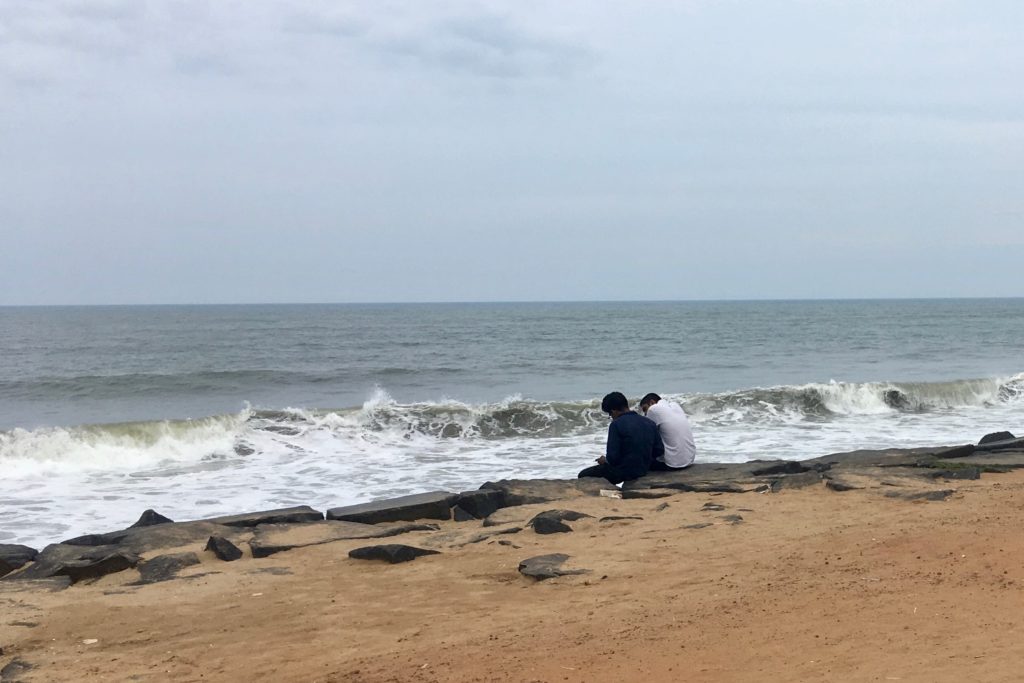
Pondicherry is separate from Tamil Nadu state, being a former French colony only fully incorporated into India in the 1960s as a union territory. Aside from the more apparent attractions of alcohol tourism (given Tamil Nadu’s strict licencing laws), and the much-touted cafes, restaurants, and architecture redolent of its distinct colonial past, the modern city gave a strong impression of multicultural South India. Each evening, a sudden transformation took place in the street below our guesthouse, as piles of straw laid out an improvised cattle market—goats being sold, presumably in advance of Eid al-Fitr the following week.
On my next visits, I will hope to again be able to take some time away from Chennai and explore more of the coast, and in particular the surf schools at Serenity Beach, Mahabalipuram, and Covelong Point. Many of these businesses, younger than their West-coast cousins, see themselves as social pioneers: providing opportunities for young people, and promoting stewardship of the beach and ocean. For now, as we travelled back towards Chennai, we stopped at the Covelong Point surf festival, now in its fifth year and expanding rapidly with corporate backing.
As we arrived back to Chennai Central for our night train to the West, we encountered our third storm of the trip, and the noise from the rains on the thin metal platform canopies combined with the spray from the tracks to smother the waiting passengers as train pulled in. I later saw images of the concurrent flooding in Mumbai—cascades of water moving through the central station—and thought our ordeal very insignificant, but at the time I was happy to safely board and be on our way on time.
The hill stations of Coonoor and Ooty in the Nilgiri hills—reached by metre-gauge steam train—were another surprise, a kind of hybrid of British upland, Alpine town, and Indian marketplace. Mossy ground, wet rock, ferns, lakes, horses, fields of carrots and beetroot, damp skies, frequent showers. The typically vibrant Indian colour palette made way for a resentful return to blacks, browns, and greys—imported woollen and acrylic jumpers, scarves, and hats a generation or two out of sync, which reminded me of old department stores, and grandparents’ cupboards. The style of dress made it feel colder in Ooty than it was, though the rapidly decreasing temperature on the ascent to 2240m had already been felt.
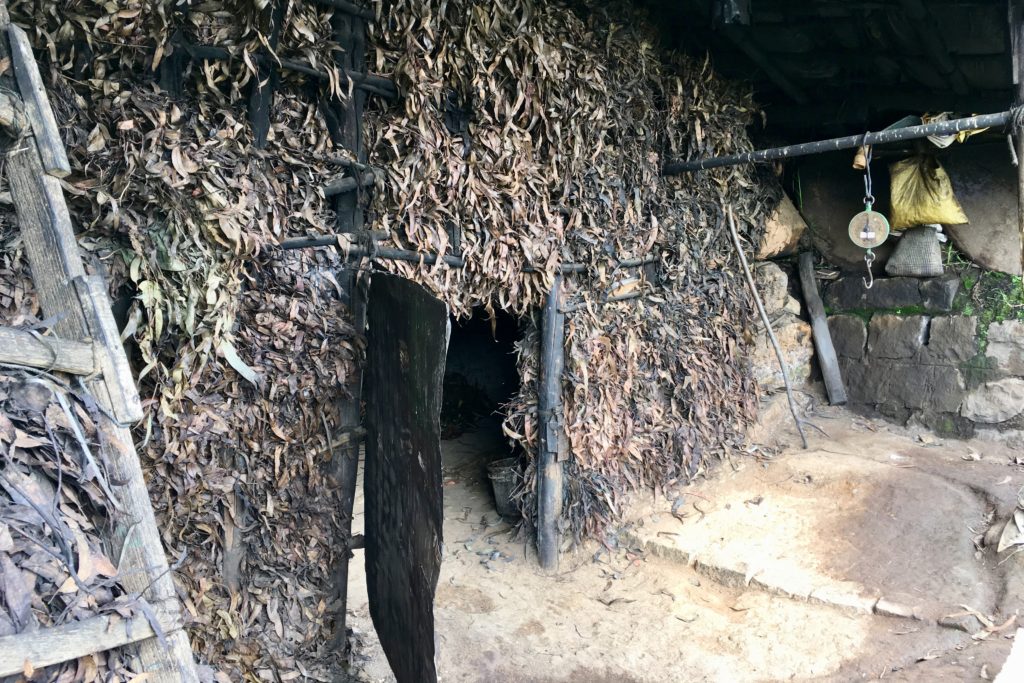
Exploring by walking, which normally makes you feel embedded in places away from cities, in India makes you feel a complete outsider, since walking as leisure has such a narrow appeal. But we were invited to see the processing of Eucalyptus oil, in a barn seemingly built entirely of the burnt leaves of that tree. And—as Hemmingway wrote of another place—we learned the contours better for having had to sweat up them.
Sleeping under blankets had felt very odd, though, and I was happy to descend towards Mysore and Bangalore in Karnataka. Bangalore was a return to dramatic urban infrastructure of flyovers and metro systems, but also has one of the most remarkable urban parks I have visited. Visited the morning after a night’s rain, the ground of Cubbon Park was spongy and wet, its massive bamboos and rocky outcrops both emerging from an uneven and apparently unstable landscape, in complete contrast to the seemingly more famous botanical gardens in the South of the city.
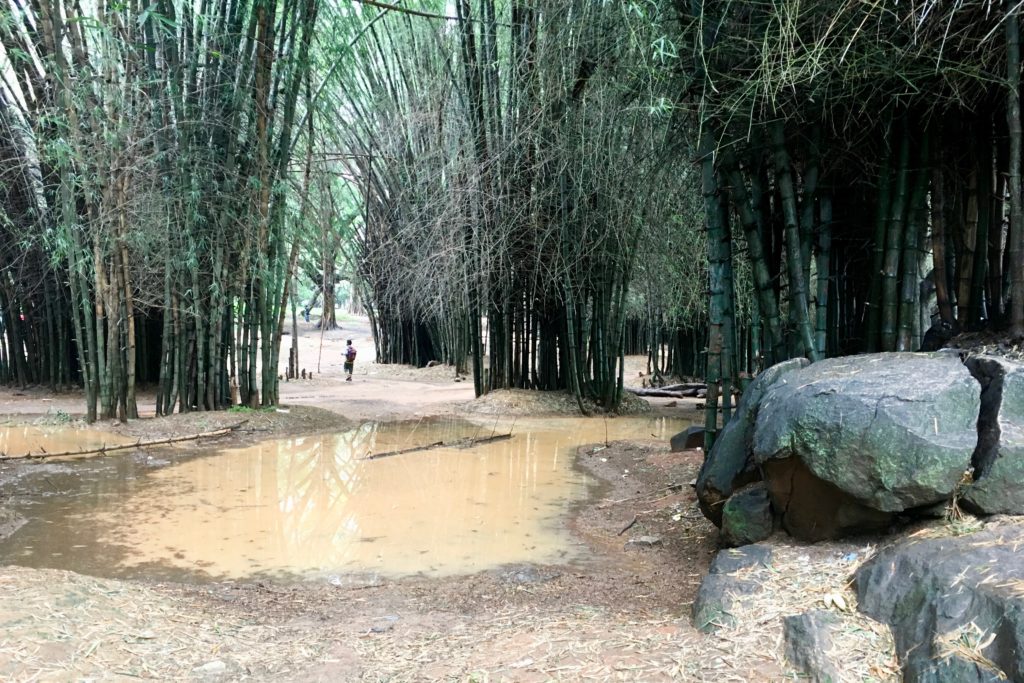
[1] Watershed Atlas of India
[2] http://www.thehindu.com/news/national/tamil-nadu/water-flows-into-palar-after-almost-a-decade/article7868057.ece
[3] RR Srinivasan Ramamoorthy. 2008. My Name is Palaru [film]
